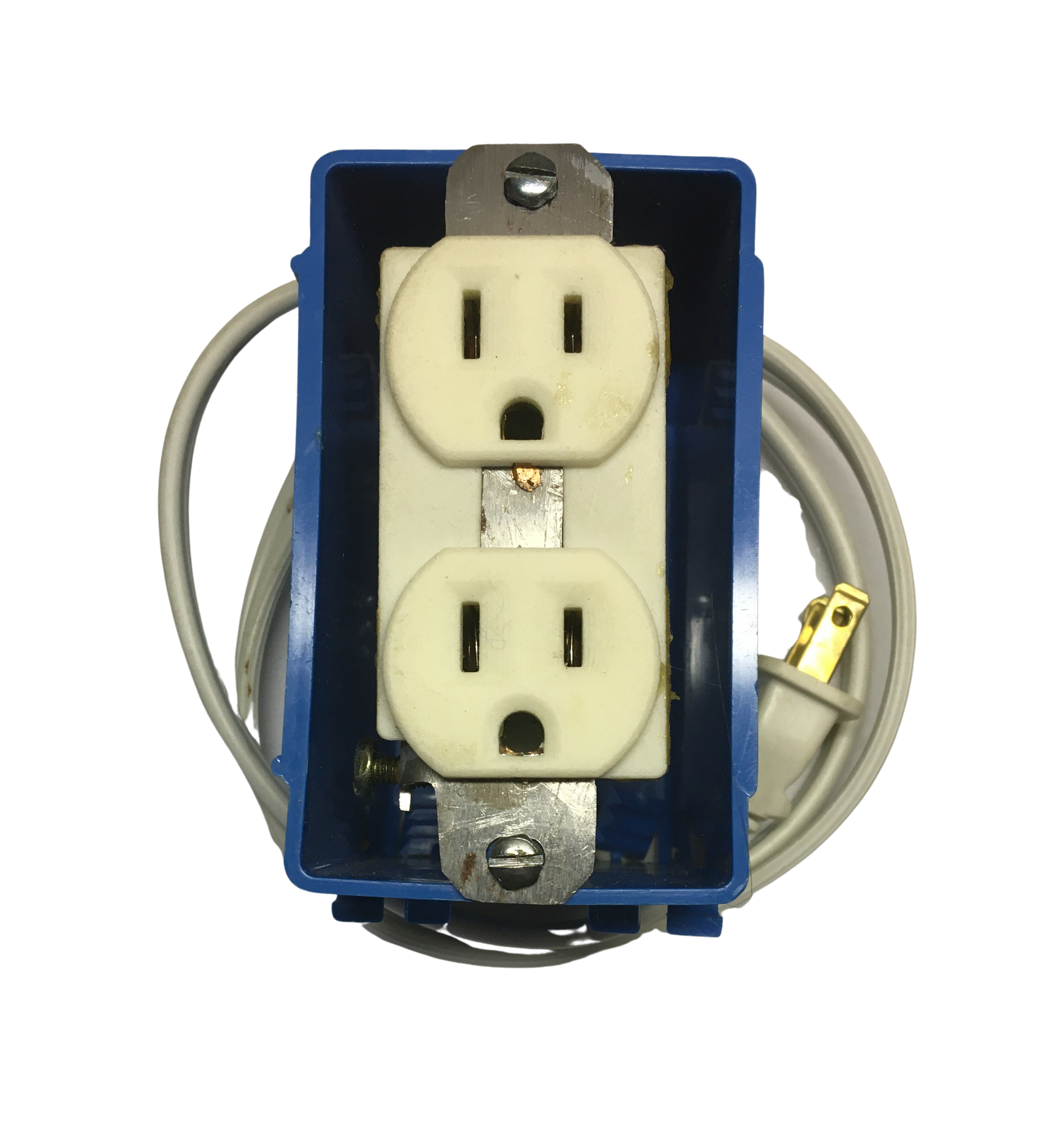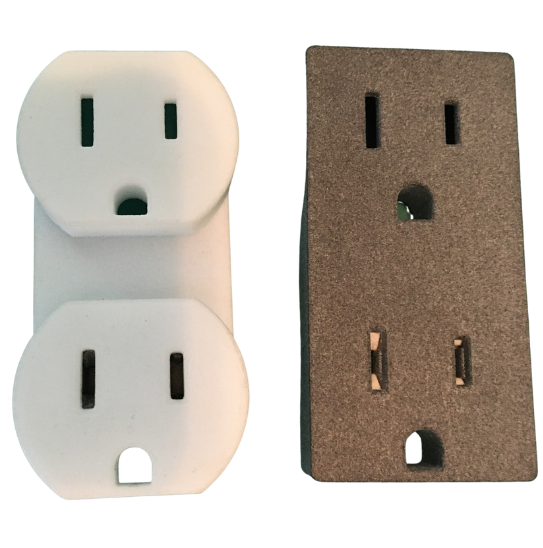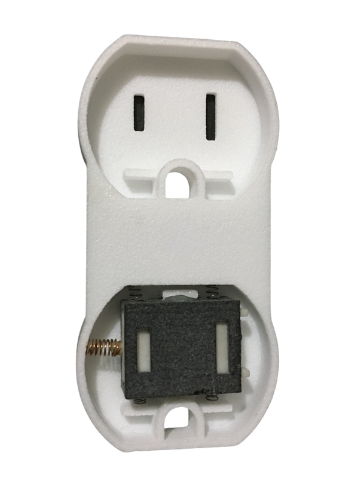This is a prototype of the whole switched receptacle of Patent 1, connected to power through the attached cord. It is not a finished product, as would be offered for sale, but only a proof of concept construction. In it, the top cap with standard openings for plug blades covers an internal sliding socket that is fixed in its initial position by four lock bar wires extending from the socket into the sides of the receptacle case.
"Tailored Power Solutions: Our Custom Electrical Receptacles"
Learn About the Benefits of Our Safety Receptacles
Introducing:
Our Safety Receptacles
Presenting two patented safety receptacle designs that exceed the safety of tamper resistant (TR) receptacles and restore the plug-in experience to the ease and simplicity of the old non-safety receptacles.
Because of advanced age and lack of funds, producing and marketing the safety receptacles is not an option. The inventor is seeking a company or entrepreneur to buy or license either of the patents or both, manufacture and market them. I describe this opportunity as disruptive because the public hates the tamper resistant receptacles because of their rejection problem. My interest in receptacles began when a coffee buddy built a house in Michigan and had to use the mandated tamper resistant receptacles. His griping about the receptacles set my mind seeking a solution to the frustrating rejection problem. Both of my safety receptacle designs, really do offer the same ease of plug entry as the old non-safety receptacles, and offer excellent safety.
In this website we offer a very brief description of the prototypes of both patent designs, and then we will discuss the shortcomings of the tamper resistant receptacles which are presently mandated by the US Electric Code for all new construction and renovation.
Patent 1, 11,011,877 B2
At the insertion of a plug, the power blades interact with four lock bar wires, retracting the lock bars into the socket and allowing the socket to move with the plug blades to connect with the power buses through the blade receivers. Notice that the movement to power also compresses the arcuate ends of the socket blade receptors, pressing the blade lock “dimples” into the holes of the plug blades. This locks the plug blades into the internal socket so that when the plug is removed from the receptacle, the socket is returned to its original position and the blades are released.
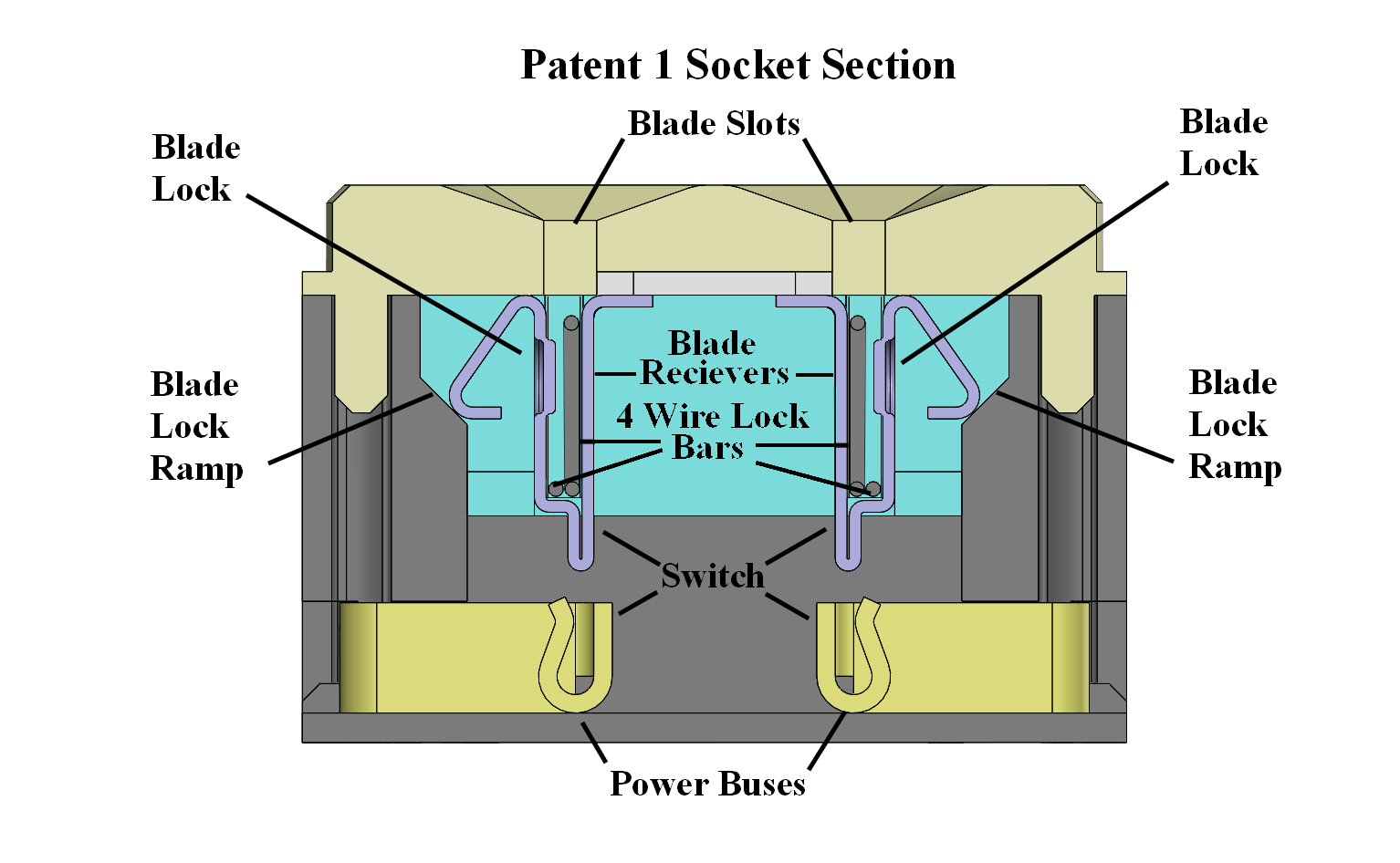
This receptacle denies access to the power buses for any foreign objects unless the objects have size and shape characteristics as standard plug blades. If you need more information on this design, please check the patent.
Patent 2, 11,108,186 B2
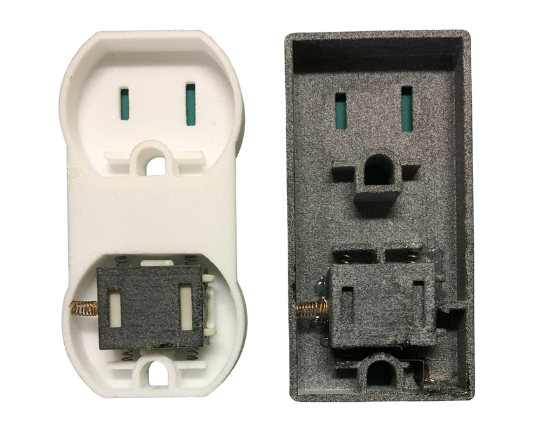
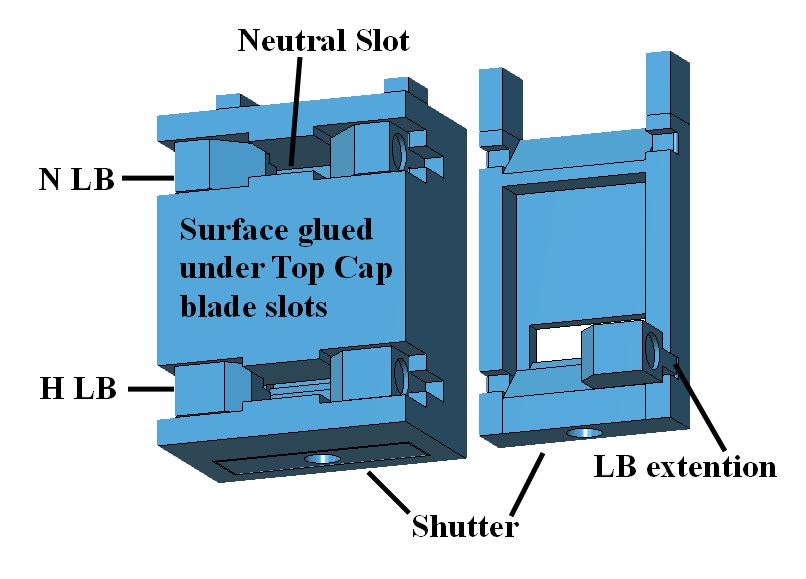
This drawing is of the top side of the frame, the labeled surface of which is glued to the top cap in line with the power blade slots. The top cap is not shown so that the four lock bars may be seen. The springs are not shown, but all the lock bars are spring biased in the shown locked position. The holes in the back of each lock bar are for mounting the springs. The extra shutter shown alongside is there just to show the structure of the shutter, with its four slots in which the four lock bar extensions lie when locked, and the two ramps that, in conjunction with the plug blades, open the shutter when all four lock bars are removed from the shutter slots. The single lock bar in the extra shutter illustrates how the four lock bars in the frame similarly lie in shutter slots when locked. The next picture shows how the lock bars are spread by inserting a polarized plug.
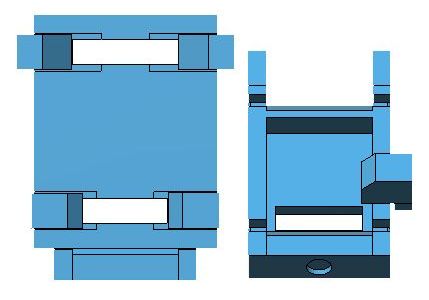
This moves all the lock bar extensions out of the shutter slots, unlocking the shutter, and allowing the interaction of the plug blades with the ramps to open the shutter so the blades can go through to power. In this picture the extra shutter has been tilted down slightly so that the extra lock bar separation from the extra shutter slot is visible. In a whole receptacle, the power bus contacts would be directly under the frame’s blade slots so that the plug blades are powered.
Since the insertion of a plug into these prototypes is almost effortless, the resistance to plug insertion in a whole receptacle of the patent 2 design would be nearly the same as the old non-safety receptacles. Likewise, the safety of the whole receptacle depends on the safety of the frame with its internal shutter and four lock bars. Therefore, obtaining one of these partial prototypes will let you experience both the ease of plug insertion and the safety of a whole receptacle with the design of patent 2. At the end of this website you will find instructions how to receive one of these prototypes at no cost.
Tamper-resistant (TR) receptacles, which the above receptacles will replace, have been mandated by the US Electrical Code since 2008 for all new construction and renovation. The public hates these receptacles because of the difficulty of plugging in a plug, but they accept them because of their supposed safety. This website exposes the fact that a single plastic screw for the receptacle cover plate could have been mandated that would provide non-safety receptacles essentially the same electrical safety as TR receptacles when installed near the floor of a home. This could have saved electrical manufacturers billions of dollars. TR receptacles are not safety receptacles and do not protect children from poking two wires or hair pins into the power slots. The TR receptacle shutters are easily opened by two such foreign objects, which is a good way to be electrocuted. The current path would be from hand to hand and through the heart!
We have demonstrated in the videos that TR receptacles provide only very limited safety, whereas our Safety Receptacles which only allow objects with the size and shape characteristics of standard plug blades to go through to power. But there is a disturbing caveat here. Some paper clips have the approximate shape and a width almost identical to the shorter hot blade of a standard plug. Thus two of these paper clips, which children could have access to, will go through to power when inserted into the patent 2 receptacle blade slots. Although the chances of a child finding two paper clips of the proper size may be rare, if the paper clip manufacturers were to make their smaller paper clips half a millimeter wider, they would not fit into the short power slot of a receptacle, and the danger would be gone. In the interest of electrical safety I would hope that manufacturers would be willing to make this change. As opposed to the patent 2 receptacle, the patent 1 receptacle did not go through to power with many attempts using the two paper clips.
In view of the much greater safety of our Safety Receptacles and the limited safety of TR receptacles, it would be logical for the regulators to mandate Safety Receptacles when they become widely available. If that were to happen it would be a very disruptive business opportunity for a first mover to manufacture and market the Safety Receptacles.
"Crafting Your Power Experience: Bespoke Electrical Receptacles"
"Experience safety tailored to your needs with custom electrical receptacles, where protection meets precision engineering. Our solutions are designed to seamlessly integrate into your unique space, delivering the highest level of security. Elevate your safety standards today; contact us to customize your electrical protection and ensure a secure environment."
Enhanced Safety
Safety Receptacles allow access to power based on the size and shape of standard plug blades. They will not allow access to power by two foreign objects as do the US mandated TR receptacles.
User-Friendly
Safety Receptacles have no rejection problem and work just like non-safety receptacles.
Easy to Install
Our receptacles are designed to be compatible with standard electrical boxes and wiring.
Are You a
Manufacturer Looking for Innovation?
If you are a manufacturer or distributor looking for innovative products to bring to market, we invite you to consider our Safety Receptacles. The patented designs of our Safety Receptacles greatly increase safety and solve the rejection problem of the presently mandated TR receptacles. They return the plug-in experience to that of the old non-safety receptacles.
Because of the increased safety over the TR receptacles, a first mover to market Safety Receptacles could also reap the benefit of a change in mandate by the US Electrical Code to the Safety Receptacles.
The Importance of Electrical Safety
and
Safety Receptacles
Electrical safety is of paramount importance, especially when it comes to protecting vulnerable populations such as children. The US Electrical Code’s mandated TR receptacles with shutters over the blade slots can be cumbersome to use and do not protect against sticking two foreign objects such as wires or bobby pins into the blade slots of a TR receptacle, which can lead to electrocution. Both patented designs of our Safety Receptacles prevent access to power with either one or two foreign objects based on the size and shape of standard plug blades, This greatly increasing the margin of safety over that of the mandated TR receptacles. With Safety Receptacles, you can have peace of mind knowing that your loved ones are protected from electrical hazards.
Why Safety Receptacles?
" Custom Electrical Receptacles
is personalization meets perfection in every socket. We're dedicated to providing you with Custom Electrical Receptacles
that redefine the very essence of tailored electrical solutions. Our team's unwavering commitment to innovation and precision engineering ensures that every Custom Electrical Receptacles
is a masterpiece designed to match your unique needs. We firmly believe that your space deserves nothing less than the best, which is why Custom Electrical Receptacles
are the epitome of customized safety and functionality. Elevate your electrical experience today with Custom Electrical Receptacles
, setting the benchmark for bespoke power solutions. Trust in our perspective to electrify your world with precision and style."
Contact Us
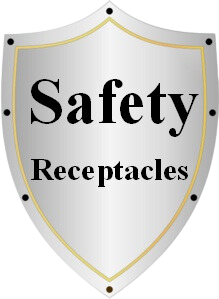
If you have any questions about our Safety Receptacles, please do not hesitate to contact us by email or telephone. You can fill out the contact form here, email us at vsandel@safetyreceptacles.com or call (906) 482-6557.
